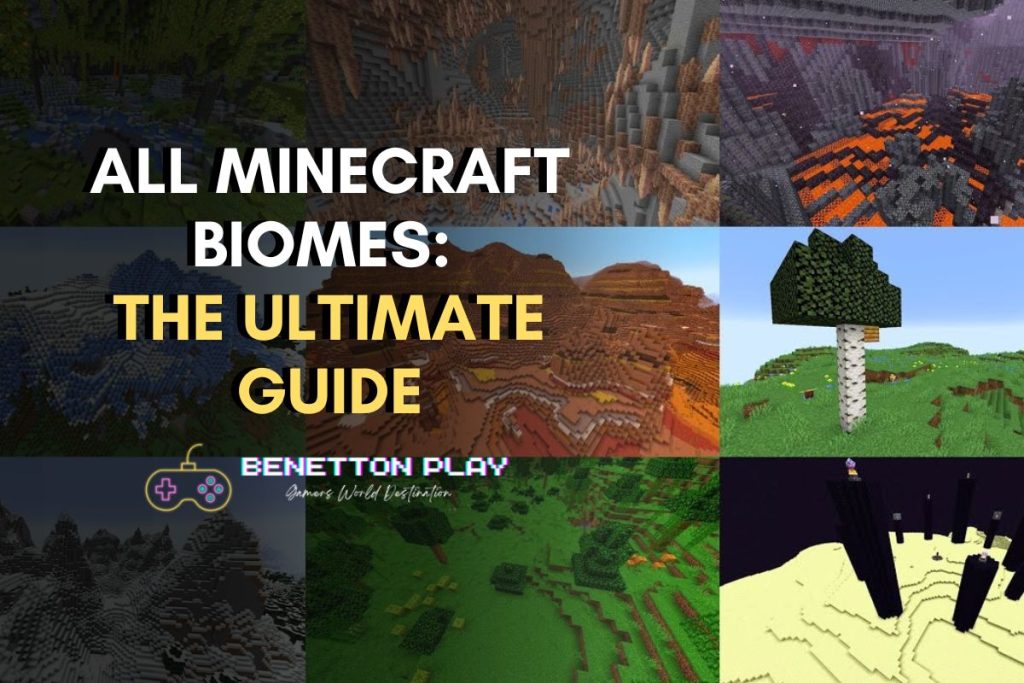
Today, in this article, we’ll look at all the features and elements present in every Minecraft biome currently in the game and give players, both new and old, a comprehensive deep dive to guide them the right way.
Minecraft is a sandbox exploration game with a massive map for players to explore, and anyone who has played Minecraft for even a few hours will tell you that the possibilities in this game are limitless.
Out of all the features and elements present in the game today, the varied biomes, in particular, play a big part in giving players that sense of discovery and also the feeling of being part of a massive world jam-packed with lots of distinct areas to explore, each with their unique features like mobs, plants, weather, etc.
All Minecraft Biomes Guide List
What is a Biome?
Before we look at the different types of biomes present in the game, let us first understand what biomes are.
Biomes in Minecraft are unique worldwide environments with distinct weather, flora, fauna, enemies, allies, greenery, and much more. Some biomes are peaceful and calm, whereas others are incredibly hostile and dangerous.
Additionally, each biome in this game comes with unique resources like ores and resources that players require to build better gear pieces like weapons and armor or trade with the numerous villagers one will come across.
To thrive in this generated world, however, players will have to venture out and efficiently harvest these resources, but they will only be able to do so and return to their homes in one piece if they have complete knowledge of where they can hope to find the resources they are looking for and prepare accordingly.
Now that we know what biomes are, let us dive in and find out how many are there.
Want to know how to trade efficiently with traders in Minecraft? Check out our comprehensive Minecraft Trading guide to know everything about trading the right way.
Types of Biomes
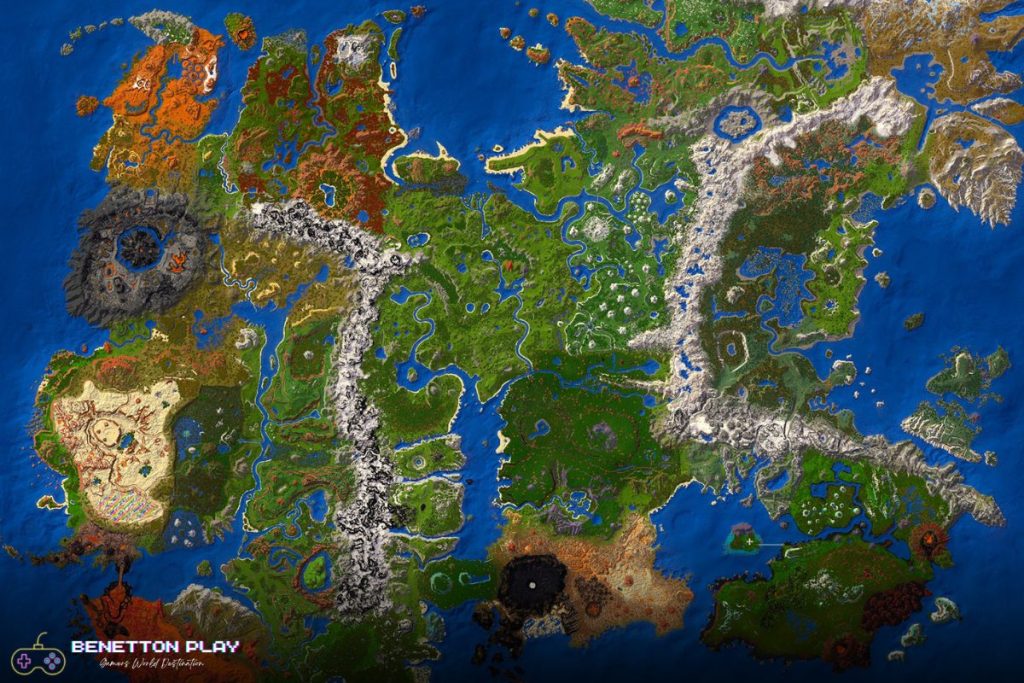
As of the game 1.20 version, the Minecraft Java Edition has 15 main biomes in the Overworld biome and an additional two in the Dimensional biome, each with its unique weather, flora fauna, enemies, resources, and more.
Here is the complete list of biomes available in the Java Edition of the game at a glance:
| Biomes | Sub-Biome(s) |
| 1) Plains | Sunflower Plains, Meadow, Snowy Plains, Ice Spikes |
| 2) Swamp | Mangroves |
| 3) Forest | Birch Forest, Old Growth Birch Forest, Dark Forest, Flower Forest |
| 4) River | Frozen River |
| 5) Jungle | Bamboo Jungle, Sparse Jungle |
| 6) Taiga | Old Growth Taiga, Grove, Snowy Taiga |
| 7) Windswept Hills | Windswept Forest, Windswept Gravelly Hills, Windswept Savanna |
| 8) Desert | N/A |
| 9) Badlands | Wooded Badlands, Eroded Badlands |
| 10) Savanna | Savanna Plateau |
| 11) Peaks | Stony Peaks, Jagged Peaks, Frozen Peaks, Snowy Slopes |
| 12) Mushroom Fields | N/A |
| 13) Caves | Canyon, Deep Dark, Dripstone Caves, Lush Caves, |
| 14) Beach | Stony Shore, Snowy Beach |
| 15) Ocean | Deep Ocean, Cold Ocean, Frozen Ocean, Lukewarm Ocean, Warm Ocean |
The Dimensional biomes are as follows:
| Biomes | Sub-Biome(s) |
| 16) The Nether | Nether Wastes, Basalt Deltas, Crimson Forest, Soul Sand Valley, Warped Forest |
| 17) The End | The End, End Barrens, End Highlands, End Midlands, Small End Islands |
Now that we know the different varieties of biomes present in this game let’s take a closer look at every one of them to learn more about them in detail.
To begin with, we’ll start with all the Minecraft Java Edition Biomes:
1) Plains
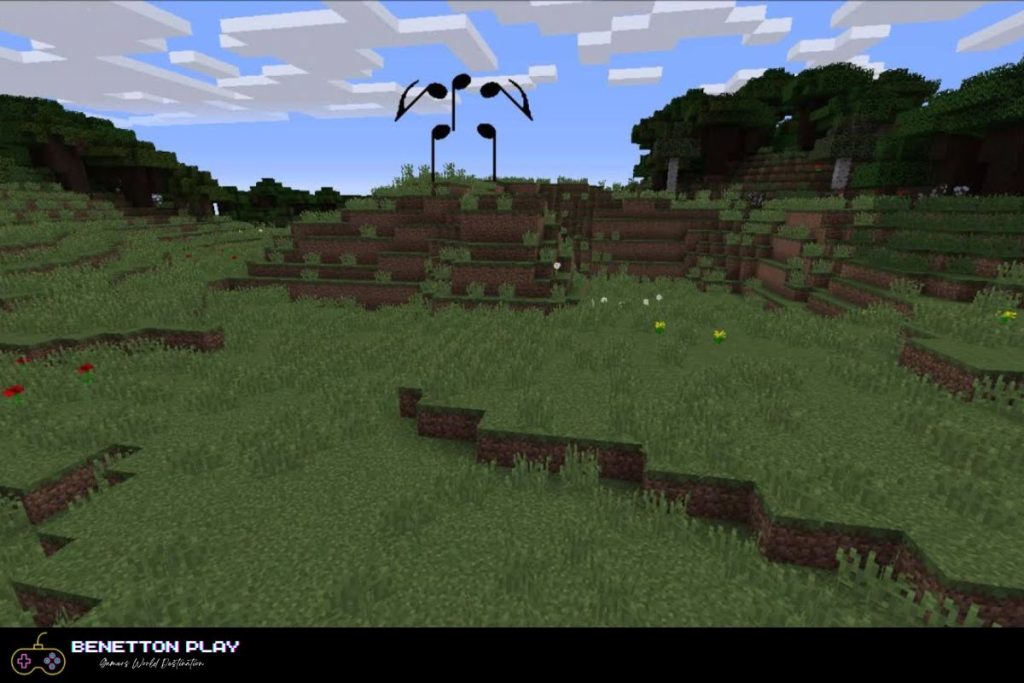
Starting with the first biome, the plains are flat, grassy lands with wide open spaces to move around in. It also acts as the default biome in which players begin their gameplay sessions if they haven’t already generated a custom world by entering a new world seed of their liking.
On most occasions, the plains biome spawns next to the forest biome, so players will always have easy access to the necessary resources to live comfortably in this biome and try to construct the ultimate house of their dreams.
Plain biome variants are:
- Sunflower Plains – Looks and feels exactly like the normal plains apart from a critical uniqueness: sunflowers. It is the only biome in the game where players will find sunflowers, which also act as an excellent compass by always pointing towards the east.
- Meadow – A variety of plains that is located on mountains. Players will be able to identify this biome by the variety of different flowers visible on it. Moreover, this is one of only two biomes in the game in which players will be able to see rabbits, and also the only high-altitude biome in which villages spawn.
- Snowy Plains – A snow-covered variety of the Plains biome. This biome is usually found in colder regions, and here players will be able to see polar bears and rabbits. In terms of structures, players might also see igloos here as well.
- Ice Spikes – This biome is the coldest of the plains biome and the most difficult to navigate, as the lands are covered with large ice spikes. Players will find a lot of snowblocks here if they are looking for them.
Here is the list of resources players can hope to find in this biome: Spruce Logs, Snow, Sunflowers, Bee Nest, Oak Logs, etc.
Here is the list of mobs players can expect to encounter in this biome: Sheep, Polar Bear, Rabbit, Pig, Horse, Donkey, Cow, and Chicken.
2) Forest
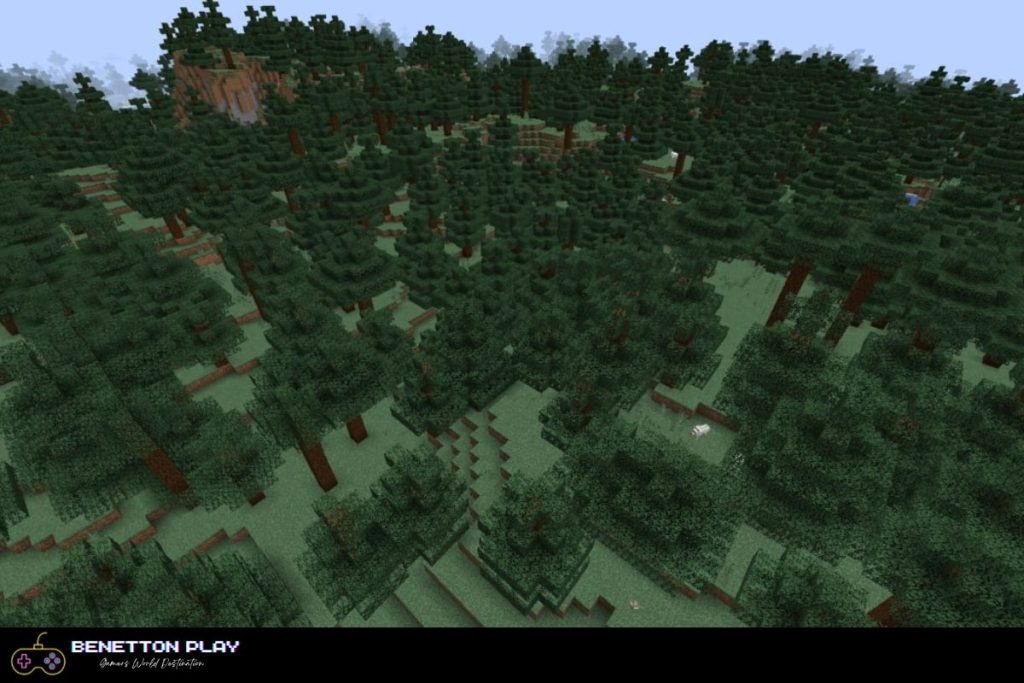
The Forest biome is the most commonly found biome in all of Minecraft and is a great biome to build your dream house next to since it gives players access to many essential resources like wood, which is heavily used in making tools and structures like houses.
Players can also turn the wood they find in the forests into a fuel source in the form of coal by using a furnace.
The forest biome variants are:
- Birch Forest – A temperate version of the common forest. Players looking specifically for birch trees will find lots here.
- Dark Forest – Extremely vast and dense type of forest in which hostile mobs spawn regularly due to the dark shade of the trees. This is also the only variety of biome in which one of the rarest structures available in the game spawns, the woodland mansion.
- Flower Forest – Players will find fewer trees in this sub-biome than others, but they will also find a massive variety of flowers in large quantities.
- Old Growth Birch Forest – This variety of forest houses many old birch trees. Although they provide more wood than standard birch trees, their daunting height makes harvesting them a real challenge.
Here is the list of resources players can hope to find in this biome: Rose Bush, Peony, Oak Logs, Mushroom Blocks, Lily of the Valley, Birch Logs, Grass, Dark Oak Logs, etc.
Here is the list of mobs players can expect to encounter in this biome: Wolf, Sheep, Rabbit, Chicken, Cow, Pig.
If you want to survive in Minecraft for long, check out our guide on Minecraft Guide here.
3) Swamp
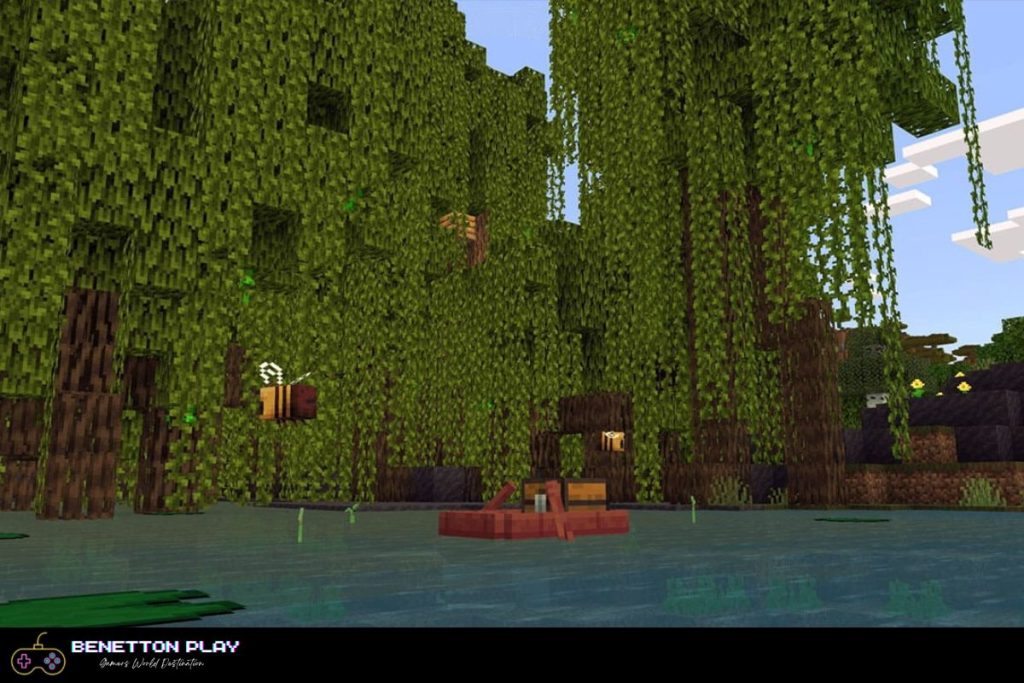
Swamps are areas in Minecraft in which the land is covered in water, making the terrain extremely slimy and sticky to navigate through, hence it is highly recommended for players to visit this biome in a boat if possible.
Players will find an abundance of clay in this biome, the only one in which frogs and witch huts spawn. Players will also find decent quantities of sugarcane on the riverbeds as well.
The Spawn biome variants are as follows:
- Mangroves – A warmer variety of the swamp biome. Players can expect to find this biome near warm areas like deserts due to its temperature. Players will have to traverse difficult routes by foot or boat because all the mangrove trees obstruct their routes.
Here is the list of resources players can hope to find in this biome: Water, Vines, Seagrass, Lily Pad, Grass Block, Mushrooms, Tall Grass, Clay, Moss carpets, Mangrove Logs, etc.
Here is the list of mobs players can expect to encounter in this biome: Tropical Fish, Warm Frog, Sheep, Pig, Cow, Chicken.
4) River
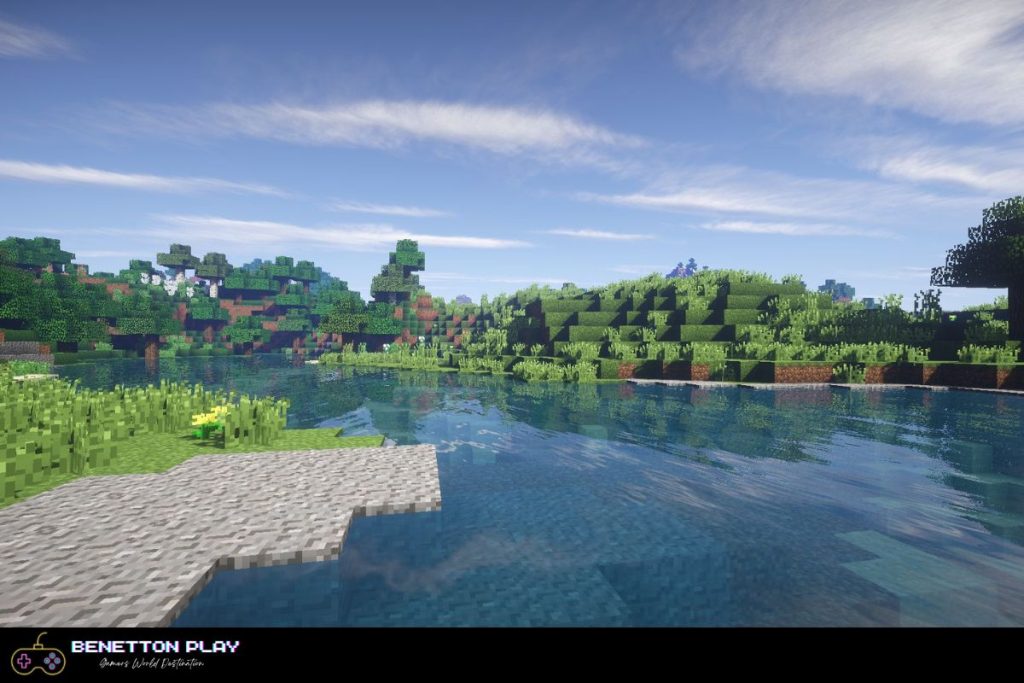
River biomes are commonly found all over Minecraft’s map, dividing landmasses and eventually leading to the larger ocean biome. Rivers can be quite dangerous to travel through on foot, so the use of boats is highly recommended here.
Players will find lots of clay on the riverbeds, and they also have a great chance of finding sugarcane growing at the banks.
The River biome variants are as follows:
- Frozen River – This is the only variant of the river biome, and players can hope to find it near or in colder biomes. In essence, it is identical to the commonly found river biome, with the only exception being that the frozen river has an ice layer on top of it.
Here is the list of resources players can hope to find in this biome: Water, Sugarcane, Seagrass, Sand, Ice, Clay, etc.
Here is the list of mobs players can expect to encounter in this biome: Squid, Salmon, Rabbit, Polar Bear.
5) Jungle
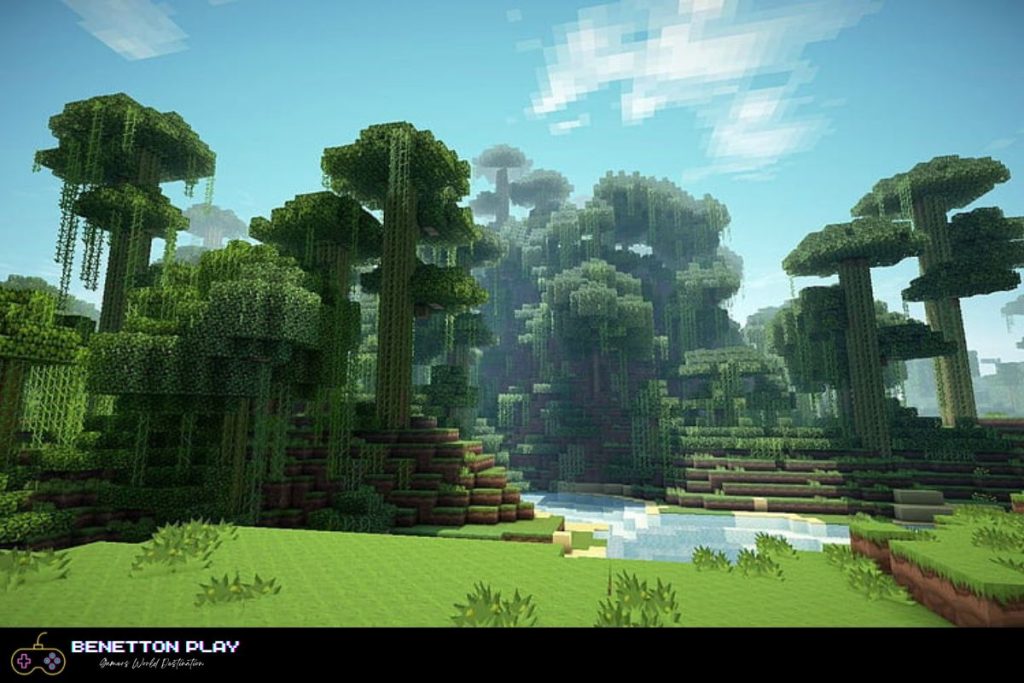
The jungle biome is among those biomes that were added much later into the game, but that didn’t stop them from becoming an instant hit with the loyal player base.
Players can identify this biome by the huge trees and mossy stone objects they can find here, and although these elements make traveling through this biome a bit difficult, they nonetheless help this biome to acquire its unique identity as compared to the Dark Forest biome.
The Jungle biome variants are as follows:
- Bamboo Jungle – These are mostly like regular jungles with the only difference being they are covered almost entirely by bamboo trees. Bamboo trees help attract pandas but are also impassable, hence making traversal through this type of jungle biome an immensely exhaustive experience.
- Sparse Jungle – In keeping with its name, this jungle biome is sparse in nature. Fewer trees spawn in here, but the ones that do, are not as tall and imposing as the ones found in the previous variants of this biome.
Here is the list of resources players can hope to find in this biome: Vines, Podzol, Oak Logs, Melon, Jungle Logs, Cocoa, Bamboo, etc.
Here is the list of mobs that players can expect to encounter in this biome: Sheep, Panda, Cow, Parrot, Ocelot, Pig, Chicken.
6) Taiga
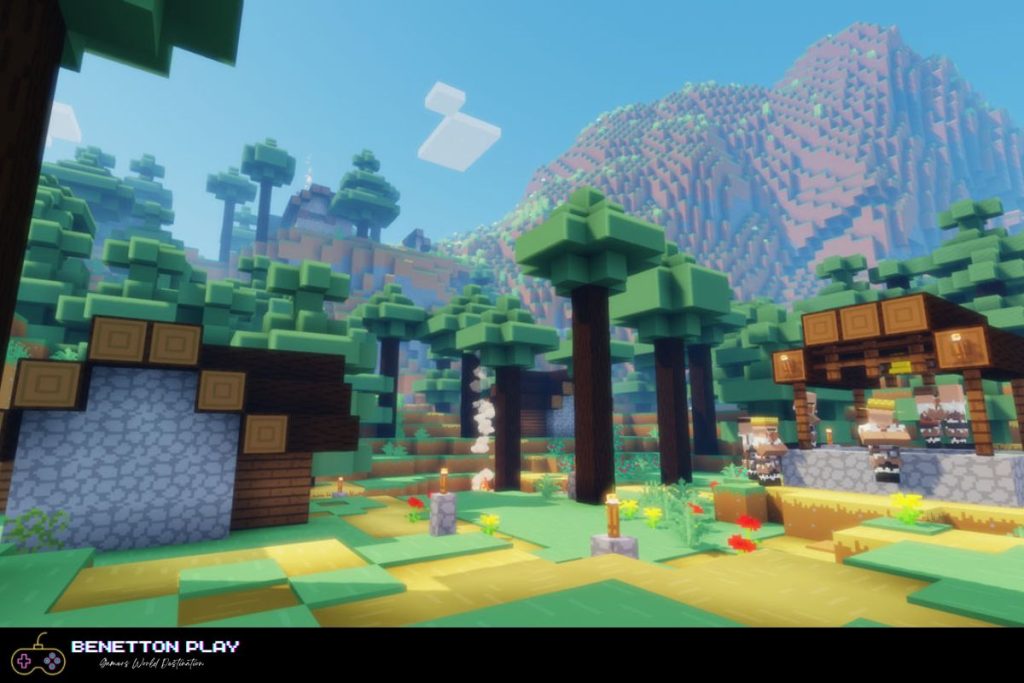
The Taiga biome is a resource-packed biome that appears only in cooler temperatures and acts as a great location for players to build their houses. Unlike forests, Taigas cannot appear near places that are experiencing warmer temperatures.
Like the forests, players will also find lots of wood in Taigas, which is great for someone needing large quantities of wood to make houses and tools.
Taigas are also the only biome in which Spruce trees appear, and although harvesting them is relatively straightforward, their leaves on the other hand are slightly hard to reach, and harvesting them could pose a stiff challenge to most players.
The Taiga biome variants are as follows:
- Old Growth Taiga – The spruce trees in here are fewer in number, but the ones that are present are thicker and taller than the ones found in the initial taiga, yielding more wood when harvested, which is great news for players looking to utilize high quantities of wood. Apart from spruce trees, players will also find pine trees here as well.
- Snowy Taiga – They are biomes that are identical to normal taigas, with the only noticeable distinction between the two being that everything in this biome is covered in snow. Apart from the contrasting snowy appearance, both the biomes are the same in terms of their resources, mobs, etc.
- Grove – On the surface, the Grove biome looks identical to the Snowy Taiga, but a couple of aspects differentiate them. Firstly, the grove biome is the only one between the two that spawns emerald ores. Secondly, players can harvest snow blocks in this biome, whereas only grass and dirt blocks are available in the other biome.
Here is the list of resources players can hope to find in this biome: Podzol, Mushrooms, Dead Bush, Mossy Cobblestone, Sweet Berry Bush, etc.
Here is the list of mobs that players can expect to encounter in this biome: Wolf, Sheep, Rabbit, Fox, Pig, Cow, Chicken.
7) Windswept Hills
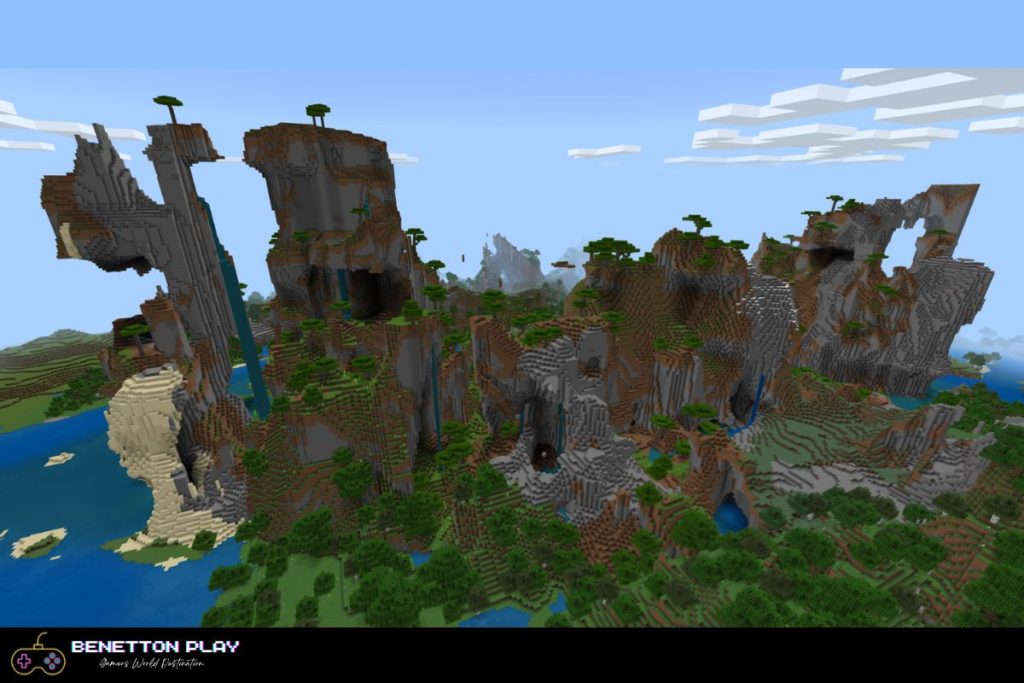
The Windswept Hills biomes are treacherous, where large areas are uneven and jagged due to the erosion they have experienced, giving birth to dangerous dark caves that act as enemy spawn points.
The Windswept Hills is a great spot for players looking to harvest coal, iron, and precious emeralds but don’t want to explore dangerous-looking, dark caves since due to its elevated status, the hills contain resources that are normally found in the ocean and are worth exploring.
The Windswept Hills biome variants are as follows:
- Windswept Forest – This biome is a more conventional variant of the parent Windswept Hills biome. This biome has more wood in the form of Oak trees than it has stones. If any player has built their house next to this biome, then they will have no shortage of wood from the nearby trees in this area.
- Windswept Gravelly Forest – This biome is quite barren as compared to others and contains more gravel than stone or grass. Players should be extremely careful when traveling through this area as falling from such heights can be fatal.
- Windswept Savanna – This biome is arguably the most volatile and dangerous variant out of all the varieties present in this biome, largely down to the fact that this biome is comprised of hard-to-navigate-through terrain like floating islands and sheer cliffs.
Here is the list of resources players can hope to find in this biome: Spruce Logs, Snow, Oak Logs, Iron Ore, Emerald Ore, etc.
Here is the list of mobs players can expect to encounter in this biome: Sheep, Pig, Llama, Cow, Chicken.
8) Desert
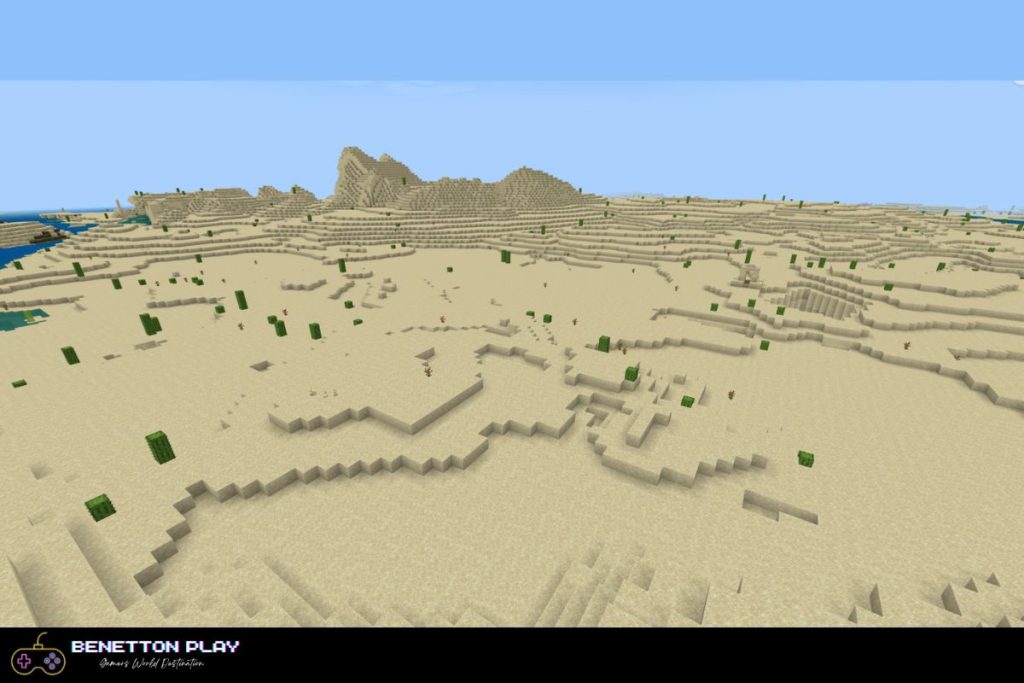
The desert biome is a barren biome in Minecraft which appears only in warmer temperatures. Players looking for sand to make glass and cacti to make green dye will find a lot of it here.
Survival in this biome is extremely difficult since it does not have any resources of its own present there like trees, grass, or water.
Additionally, a variety of generated structures are found in this biome like Villages, Desert Pyramids, Fossils, etc.
Players looking to make a base in this region should be aware of two points. Firstly, since this biome does not have water of its own, players will have to design and implement a custom system to transport water from a source to their farms.
Secondly, as mentioned earlier, since this biome does not have any resources of its own, players are recommended to make their houses at the edges of the deserts to avoid losing their lives.
As of right now, the desert biome has no variants of it.
Here is the list of resources players can hope to find in this biome: Sandstone, Sand, Dead Bush, and Cactus.
Here is the list of mobs players can expect to encounter in this biome: Rabbit.
9) Badlands
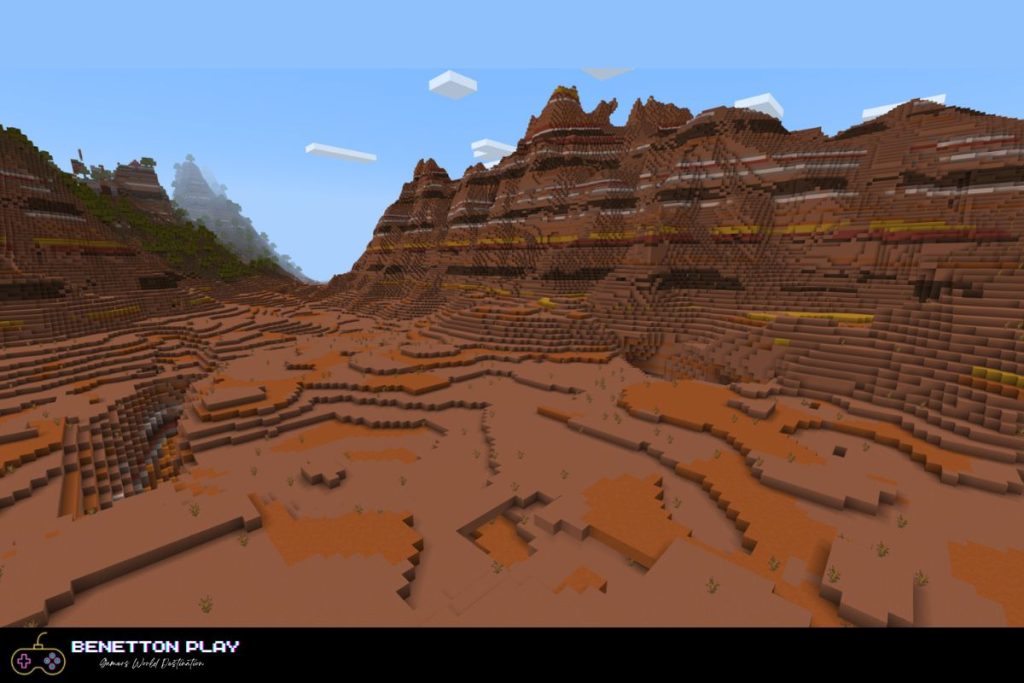
The badlands biome is one of the rarest and most unique biomes currently in the game due to the fact that players can harvest a large quantity of not only terracotta from its lands and is also the only biome in the game in which terracotta appears naturally.
Players can also harvest gold ores from this biome by using the Mineshaft scattered throughout the biome.
Players looking to build a home in this biome may want to rethink their strategy once again. This biome does not have access to necessary survival elements like trees, water, and animals, to name a few, needed for a thriving home.
The Badlands biome variants are as follows:
- Wooded Badlands – This biome variant is almost like the initial badlands, but instead of totally barren land, the upper regions of this biome have Oak trees growing on them thanks to the layer of grass and dirt on it, providing a source of wood for players visiting this area in the process.
- Eroded Badlands – A more extreme version of the initial badlands with very limited resources, and is extremely difficult to travel through as well, as the land here is covered with tall soil formations known as hoodoos.
Here is the list of resources players can hope to find in this biome: Oak Logs, Coarse Dirt, Grass, Gold Ore, Terracotta, Red Sand, etc.
Here is the list of mobs players can expect to encounter in this biome: Sheep, Pig, Cow, Chicken.
10) Savanna
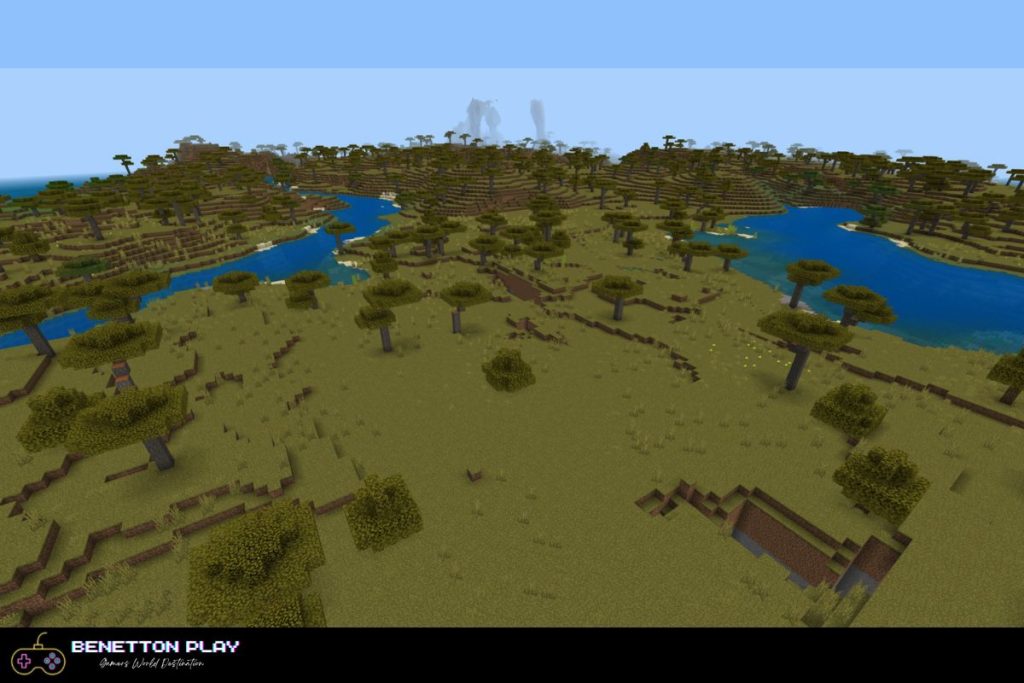
The Savanna biome is yet another barren biome, but compared to the other biomes on this list, living a good life here is quite possible, largely due to the biome’s gentle and accessible environment.
The area of this biome has low elevation and wide open spaces for players to explore. Moreover, traversal through this biome is quite fast, thanks to the availability of fast-moving mounts like Horses and Llamas.
Acacia trees surround the entire area, and staying with the trees for a bit, this biome is the only one in which Acacia trees spawn naturally. Oak trees also spawn here, but only sparingly.
The Savanna biome variants are as follows:
- Savanna Plateau – This biome in essence is quite similar to the initial savanna biome, only this time, there are more hills in the regions, making an already difficult place to traverse through even more difficult.
Here is the list of resources players can hope to find in this biome: Tall Grass, Oak Logs, Grass, and Acacia Logs.
Here is the list of mobs that players can expect to encounter in this biome: Sheep, Pig, Llama, Horse, Donkey, Cow, and Chicken.
11) Peaks
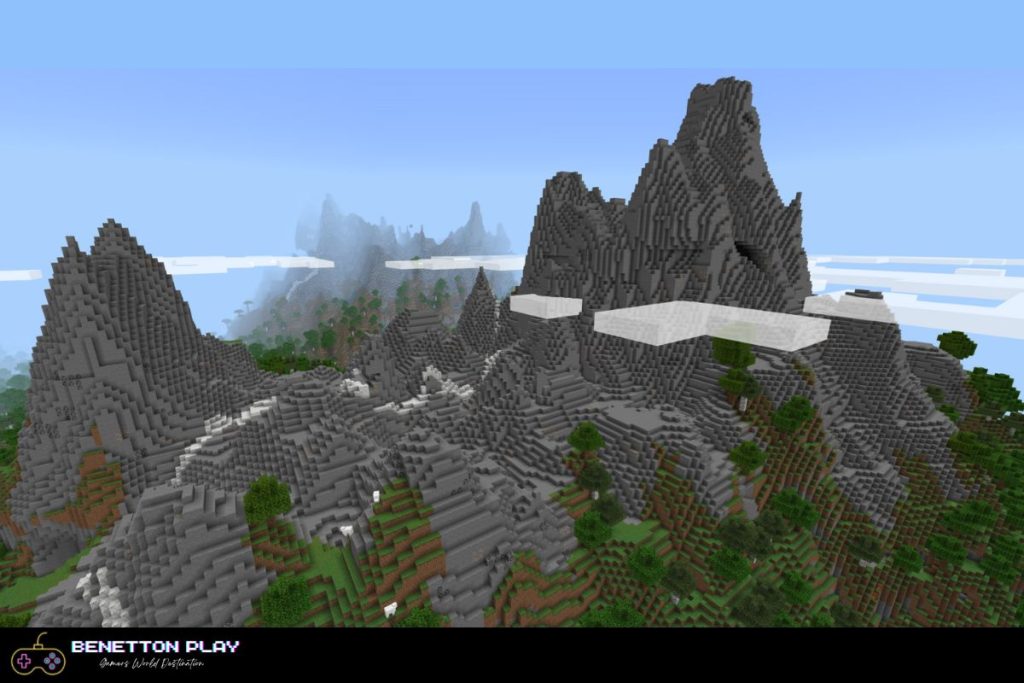
The Peaks biome is a unique type of biome of which there isn’t a standardized default version that players will see across all the peaks that they go to, as it is quite diverse in nature, but if seen from a broader sense, it is all about treacherous cliffs and extreme heights.
The terrain is difficult to navigate through, making it a poor choice for someone looking to build a house up there. For those very reasons, players also won’t find any mobs up here as well.
Although the journey to the top of the peaks is quite challenging, the reward in the form of access to rare resources like emeralds, coal, iron, etc. makes it worth the hassle. Players will also be able to experience the most breathtaking view of the overworld from the top of the peaks as well.
The Peaks biome variants are as follows:
- Stony Peaks – This sub-biome is the closest to the standard peaks; although not generally snowy, they get some snow if they are in a snowy region. Players can expect to find resources like Calcite, Andesite, and Granite on these peaks.
- Jagged Peaks – The tallest mountains in the overworld are present here. Players can differentiate these peaks from Stony Peaks by the generous snow and ice it is covered with. Resources like Emerald Ore and Stones can be found here.
- Frozen Peaks – Almost an identical twin of the Jagged Peaks; the only difference is that this peak is covered in even more ice and snow. Players can expect to find Emerald Ore, Stones, Ice, Packed Ice, and Snow from these peaks.
- Snowy Slopes – This variety of peaks is a slightly toned-down version of something like the Frozen Peaks. The land is flatter in comparison and even less treacherous to travel through, but players are still advised to be cautious when traveling. This is the only sub-biome that houses Igloos.
Here is the list of resources players can hope to find in this biome: Gravel, Granite, Calcite, Andesite, Ice, Powder snow, etc.
Here is the list of mobs players can expect to encounter in this biome: Rabbit, Goat, Polar Bear, Sheep, Donkey.
12) Mushroom Fields
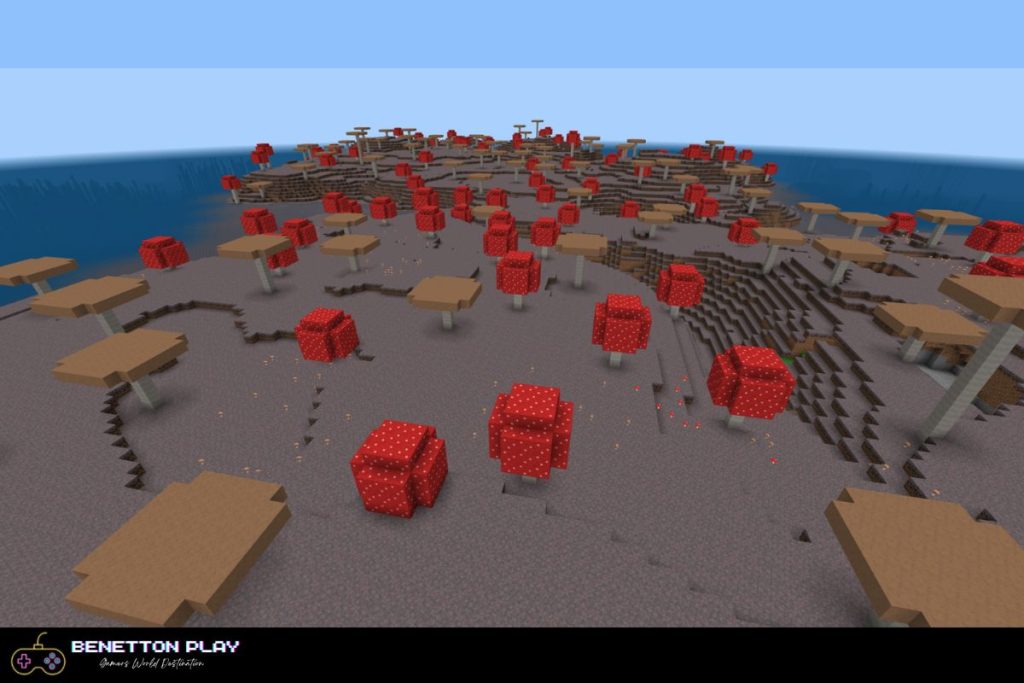
The Mushroom Fields biome is a rare and unique island covered with mushrooms as big as buildings and is also the only biome in which players will find mushrooms spawning naturally.
This biome is arguably one of the best places to set up your home, as even though the island is scarce on necessary resources that players might need, enemy mobs won’t spawn here. The ones that do spawn spawn only after the players have left the island, posing no harm to them.
Deep oceans always surround the Mushroom Fields, hence players will have to look for a sturdy boat to make it there in one piece.
As of right now, the Mushroom Fields biome does not have any variants to it.
Here is the list of resources players can hope to find in this biome: Mushroom blocks, Mushroom, Mycelium.
Here is the list of mobs players can expect to encounter in this biome: Mooshroom.
13) Cave
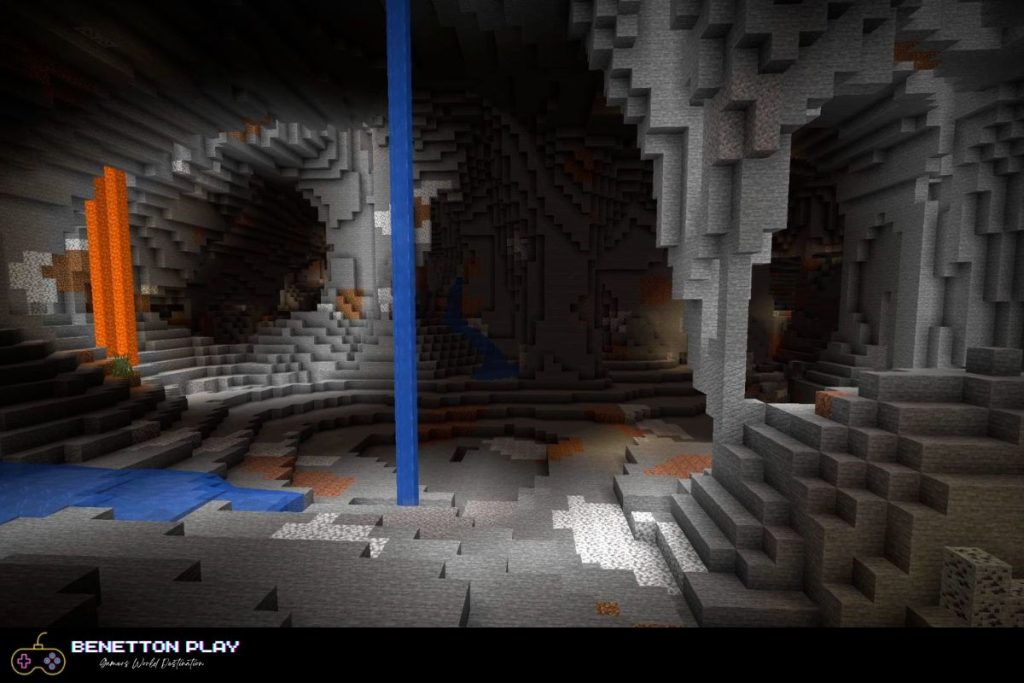
The cave biome is not just a standard biome, instead, they act as underground tunnel systems made initially out of stone, but the deeper the players go into it, they may encounter caves made out of Deepslate.
Apart from traversing through maze-like paths inside the caves and battling various types of enemy mobs like Zombies and Creepers, the biggest danger to the players will be the absolute darkness they will have to contend with, which blocks their vision and renders them helpless against the hostile foes.
The cave biome variants are as follows:
- Canyon – This cave sub-biome is a dangerous biome comprising steep vertical cliffs that puts players at risk of injuries, whether they are walking at ground level or trying to navigate the narrow pathways in the canyons themselves.
- Deep Dark – This sub-biome is made up entirely of sculk blocks and veins. Players are advised to sneak into this area because if they are detected, they will have to avoid and escape a powerful enemy mob called the Warden. Moreover, this biome is always found near Ancient Cities.
- Dripstone Caves are uniquely styled caves with pointed drip-like stone formations under them. Although the dripstones themselves don’t have any meaningful use, they still act as a great indicator to let players know that they have entered a new biome.
- Lush Caves – Unlike other cave variants in this list, this sub-biome is jam-packed with greenery and looks quite vibrant. Players will normally find this type of cave spawning under Jungles and Forests; it is the only place where they will find axolotls.
Here is the list of resources players can hope to find in this biome: Sculk, Spore Blossom, Vines, Clay, Dropleaf, etc.
Here is the list of mobs players can expect to encounter in this biome: Warden, Axolotl, Tropical Fish, Creeper, Spider, Zombie, etc.
14) Beach
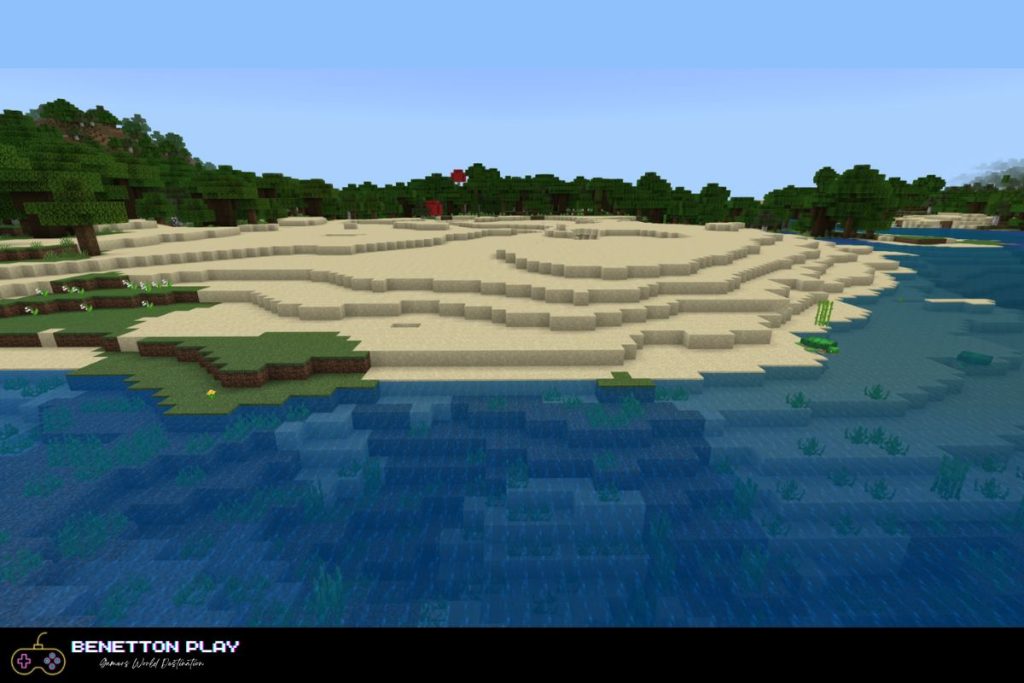
The beach biome can be found attached to or alongside another biome that is situated around an ocean biome. Since they are around the ocean biome, players will find lots of sand and other similar resources in and around the area.
The beach biome is a bountiful biome in which players can harvest various resources, and it is the only one in which Sea turtles specifically spawn. Apart from the Sea turtles, however, players may also see other types of mobs wandering into this biome as well.
The beach biome variants are as follows:
- Stony Shore – This sub-biome is a dangerous type of beach made completely out of stone and gravel. They replace standard beaches in cooler temperatures and are commonly found in the Taiga biome.
- Snowy Beach – This biome appears in the coldest of biomes, especially around frozen oceans. They are a lot like regular beaches, but this particular biome is covered in a thick blanket of snow instead of normal sand. Due to the layer of snow, instead of sea turtles spawning here, rabbits take their place.
Here is the list of resources players can hope to find in this biome: Water, Gravel, Andesite, Sandstone, Sand, Clay, Diorite, etc.
Here is the list of mobs players can expect to encounter in this biome: Rabbit, Sea Turtle.
15) Ocean
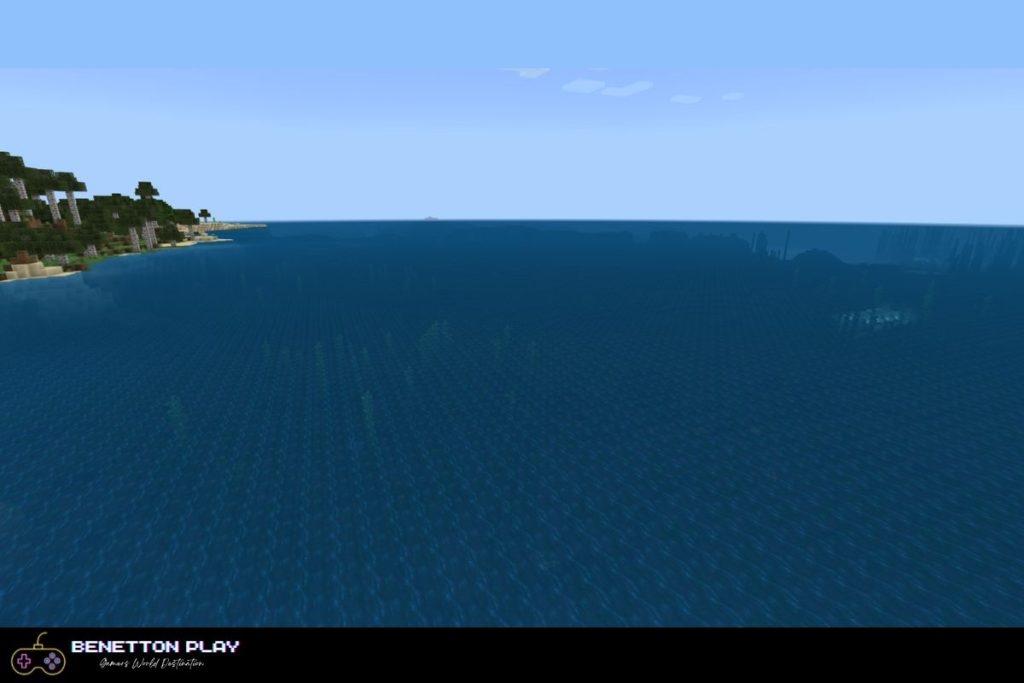
The ocean biome is one of the largest biomes in the game that covers a large chunk of the Overworld’s map wherever they spawn.
The temperature of the biome they spawn in dictates the state in which players will find it. Oceans located in warm temperatures will be rough and flowy in texture and will have coral reefs, whereas oceans in colder temperatures will have frozen surfaces with large icebergs poking out.
The ocean biome variants are as follows:
- Deep Ocean – This ocean sub-biome is one of the deepest biomes in the game, and although they are extremely difficult to explore, players who are brave enough to venture into it can hope to find rare ocean monuments and tall seagrass plants.
- Cold Ocean – This biome spawns in the same temperature range that Taiga biomes do. In terms of mobs, players will find lots of salmon in it.
- Frozen Ocean – A unique sub-biome in the ocean where the entire ocean is covered in a thick layer of ice, freezing the entire ocean in its place. This is the only sub-biome in which polar bears spawn.
- Lukewarm Ocean – This sub-biome has light blue colored water and is generated in temperatures similar to Jungles and Savannas. The ocean floor here is covered completely by sand, and moreover, the ruins found here are also quite sandy in make.
- Warm Ocean – This sub-biome is generated in the warmest of biomes with temperatures similar to that of deserts and Badlands. Players can expect to find lots of aquatic flora and fauna in this biome, but one thing they won’t find here is ocean monuments.
Here is the list of resources players can hope to find in this biome: Sea Grass, Coral, Sand, Kelp, Water, Clay, Gravel, Ice, etc.
Here is the list of mobs players can expect to encounter in this biome: Polar Bear, Puffer Fish, Salmon, Squid, Cod, Rabbit, etc.
Now that we have taken a look at all the biomes currently available in the Java Edition of the game, we’ll now move on and try and learn more about the Dimensional Biomes present in the game.
16) The Nether
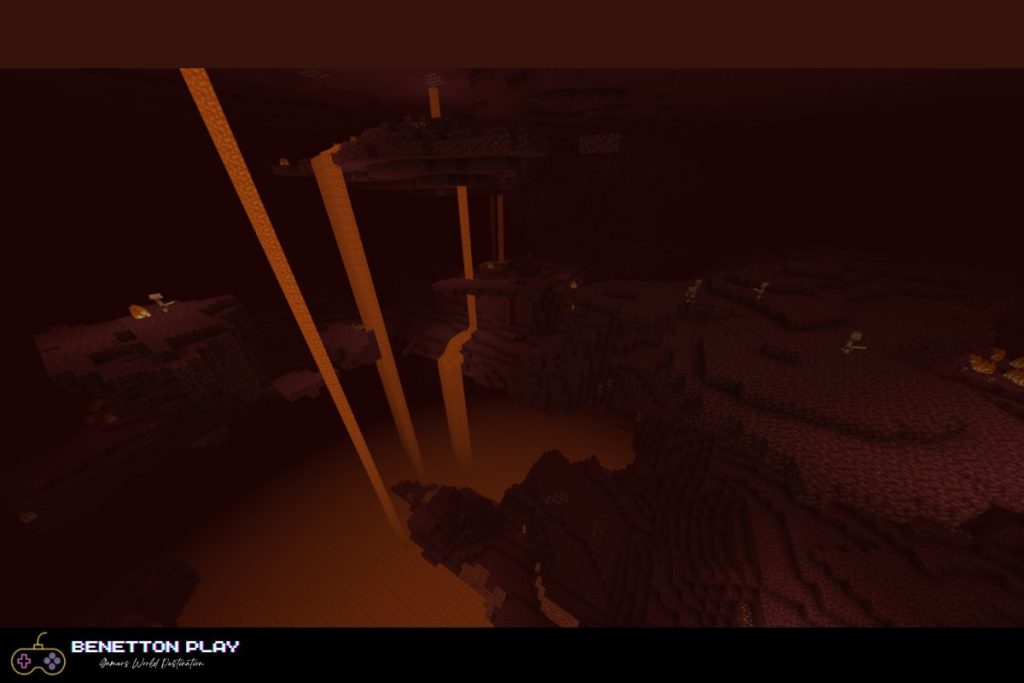
The Nether biome is a dangerous, highly volatile biome located underground, part of the second dimension. Players can access this biome anywhere in the Overworld using a Nether Portal.
Traversal through this biome is particularly difficult thanks to the numerous lavafalls and massive voids scattered around the area, capable of vaporizing players into clouds of smoke in an instant. Players will have to construct their own structures and bridges if they are looking to venture deeper into this biome.
The Nether Biome variants are as follows:
- Nether Wastes – The primary biome of The Nether, the Nether Wastes is made entirely of Netherrack and Lava, and the area here comprises mainly of wide open spaces that players will have to use to travel through this sub-biome while trying not to get swallowed by the scorching lava in the process. In terms of mobs, players will face zombified piglins here.
- Basalt Deltas – This sub-biome is the only biome in which no structures are generated. Navigating through this biome is especially treacherous mainly due to the harmful magma cubes, hot lava pools, and obstructive basalt formations.
- Crimson Forests – Although this particular biome is called a forest, it is anything but. The enormous tree-like structures here are actually created by fungus. Unlike other sub-biomes, this one is hospitable, largely due to the Hoglins present here, which can be bred to make a sustainable farm.
- Soul Sand Valley – Considered one of the most dangerous biomes in the overworld, largely because almost everything in the darkness around the players is looking to harm them, especially the blue soul fire that burns players for double damage compared to normal fires.
- Warped Forest – The Warped forest biome, just like the crimson forest biome before it, has enormous fungus structures sprouting in and around its area. This biome in particular acts as a good breather for players as no mobs present here are hostile by default. The Warped Forests are also the only biome for players to acquire Nether sprouts.
Here is the list of resources players can hope to find in this biome: Lava, Glowstone, Ancient Debris, Red Mushroom, Netherrack, Soulstone, etc.
Here is the list of mobs players can expect to encounter in this biome: Enderman, Zombiefied Piglin, Strider, Hoglin, etc.
17) The End
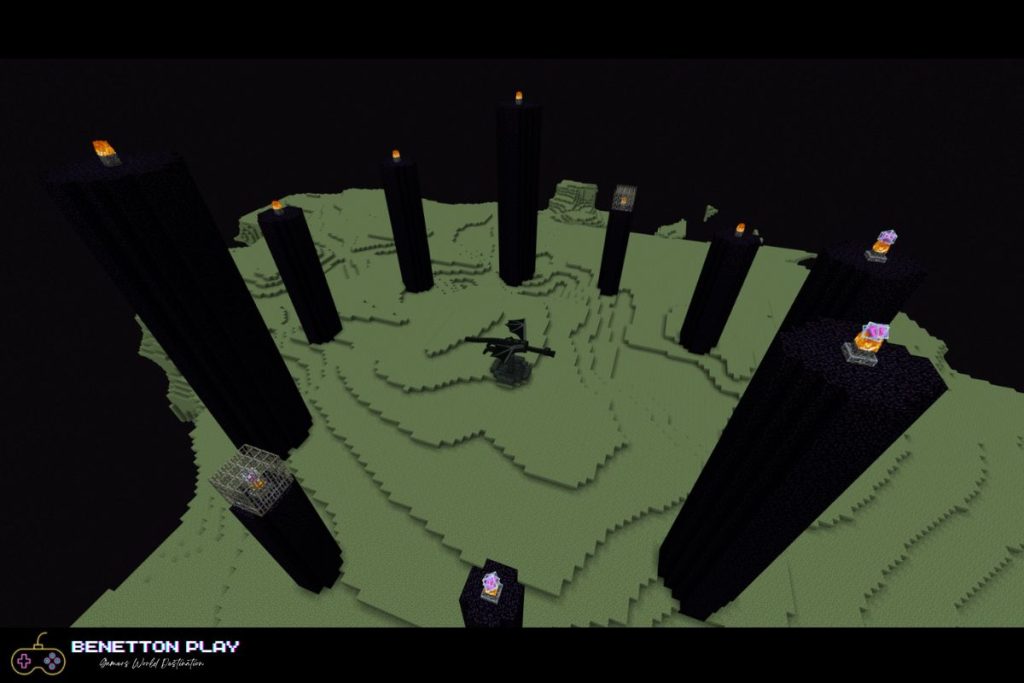
The End biome is the third and final biome players will find in Minecraft. Although players can still continue the game afterward, once they enter this biome, they can only leave it if they either get killed or defeat the ultimate final boss of the game, the Ender Dragon.
Apart from killing and getting killed, players will find End ships in the outer areas of the biome as well, which also happen to be the only source of a rare in-game item called Elytra, which are basically wings that allow players to glide through the air and access places previously deemed inaccessible.
The End biome variants are as follows:
- The End – This is the first biome players will end up in and they face the Ender Dragon for the first time when they enter the End biome.
- End Barrens – Not a full-fledged biome in itself, the End Barrens biome acts as the outer layers of the biome that surrounds the main area.
- End Highlands – This biome helps form hilltops in the central area’s outer islands. Players can find End Ships and End cities in this biome.
- End Midlands – Another biome that assists in forming the outer islands between the previously mentioned sub-biomes, the end barrens, and the end highlands.
- Small End Islands – This biome consists of smaller islands in the outer layer surrounding the central area whose primary purpose is to act as stepping stones for players looking to hop from one biome to another.
Here is the list of resources players can hope to find in this biome: Obsidian, End Stone, Chorus Flower, Chorus Plant.
Here is the list of mobs players can expect to encounter in this biome: Shulkers, Endermen, and the Ender Dragon.
Conclusion
So there you have it. This was our comprehensive Minecraft biomes guide that we hope will help players all across to understand better the various diverse biomes currently available in this seemingly simple yet feature-packed game to get the ultimate Minecraft experience.
Please keep coming back to this post whenever you might be in need of any assistance regarding the various biomes present in the game, or the numerous mobs and resources that spawn in there, as we’ll keep updating this post with the latest updates, as and when they are released to the gaming community.






